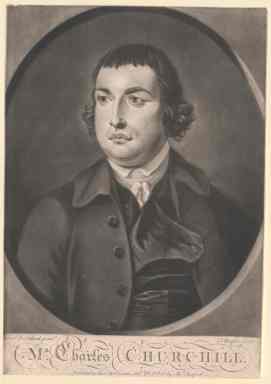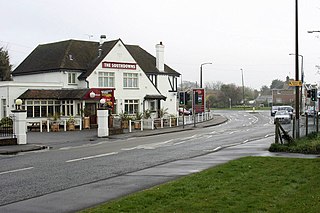
William Hayley (9 November 1745 –12 November 1820) was an English writer, best known as the biographer of his friend William Cowper.

William Hayley (9 November 1745 –12 November 1820) was an English writer, best known as the biographer of his friend William Cowper.


Born at Chichester, he was sent to Eton in 1757, and to Trinity Hall, Cambridge, in 1762; [2] his connection with the Middle Temple, London, where he was admitted in 1766, was merely nominal. In 1767 he left Cambridge and went to live in London. His private means enabled Hayley to live on his patrimonial estate at Eartham, Sussex, and he retired there in 1774. [3] The location of this house in Eartham is now occupied by the Great Ballard School.

So great was Hayley's fame that on Thomas Warton's death in 1790 he was offered the laureateship, which he refused. In 1792, while writing the Life of Milton, Hayley made Cowper's acquaintance. A warm friendship sprang up between the two which lasted till Cowper's death in 1800. Hayley indeed was mainly instrumental in getting Cowper his pension. In 1800 Hayley also lost his natural son, Thomas Alphonso Hayley, to whom he was devotedly attached. He had been a pupil of John Flaxman's, to whom Hayley's Essay on Sculpture (1800) is addressed. Flaxman introduced William Blake to Hayley, and after the latter had moved in 1800 to his marine hermitage at Felpham, Sussex. Blake settled near him for three years to engrave the illustrations for the Life of Cowper. This, Hayley's best known work, was published in 1803–1804 (Chichester) in 5 vols. [3]
Hayley died at Felpham on 12 November 1820. [3] His library was sold at auction by Evans, in London, on 13 February (and twelve following days), in 2649 lots. A copy of the catalogue is at Cambridge University Library (Munby.c.123(4)).

Hayley had already written occasional poems, when in 1771 his tragedy, The Afflicted Father, was rejected by David Garrick. In the same year his translation of Pierre Corneille's Rodogune as The Syrian Queen was also declined by George Colman. Hayley won the fame he enjoyed amongst his contemporaries by his poetical Essays and Epistles; a Poetical Epistle to an Eminent Painter (1778), addressed to his friend George Romney, an Essay on History (1780), in three epistles, addressed to Edward Gibbon; Essay on Epic Poetry (1782) addressed to William Mason; A Philosophical Essay on Old Maids (1785); and the Triumphs of Temper (1781). The last-mentioned work was so popular as to run to twelve or fourteen editions; together with the Triumphs of Music (Chichester, 1804) it was ridiculed by Byron in English Bards and Scotch Reviewers. [3] His 1789 tragedy Marcella was performed at Drury Lane.
In 1805 he published Ballads founded on Anecdotes of Animals (Chichester), with illustrations by Blake, and in 1809 The Life of Romney. For the last twelve years of his life Hayley received an allowance for writing his Memoirs. [3]
In 2007, the exhibition "Poets in the Landscape: the Romantic Spirit in British Art" curated by Simon Martin and held at Pallant House Gallery in Chichester explored Hayley's role as patron and friend of artists including William Blake, George Romney, John Flaxman and Joseph Wright of Derby. [4] It was appropriate that the gallery's new wing is situated on 8 North Pallant, which formed part of the house in which Hayley was born. A portrait of Hayley by George Romney is currently on long-term display in the gallery.
In 1769 Hayley married Eliza Ball (1750-1797), daughter of Thomas Ball, dean of Chichester. Eliza Ball Hayley was a translator and an essayist. She translated into English two essays by the French essayist Anna Thèrese de Lambert (1647 – 1733), Traité de l’Amitié (1732) and Traité de la Vieillesse (1732), published in 1780 as Essays on Friendship and Old Age by the Marchioness de Lambert. Sixteen years later she published an original essay, The Triumph of Acquaintance over Friendship: an Essay for the Times (1796). She died in 1797; after being separated from William since 1789. He attributed the mental illness she suffered as reasoning for the separation. He married in 1809 Mary Welford, but they also separated after three years. He left no child. [3]

William Blake was an English poet, painter, and printmaker. Largely unrecognised during his life, Blake is now considered a seminal figure in the history of the poetry and visual art of the Romantic Age. What he called his "prophetic works" were said by 20th-century critic Northrop Frye to form "what is in proportion to its merits the least read body of poetry in the English language". His visual artistry led 21st-century critic Jonathan Jones to proclaim him "far and away the greatest artist Britain has ever produced". In 2002, Blake was placed at number 38 in the BBC's poll of the 100 Greatest Britons. While he lived in London his entire life, except for three years spent in Felpham, he produced a diverse and symbolically rich collection of works, which embraced the imagination as "the body of God" or "human existence itself".

John Flaxman was a British sculptor and draughtsman, and a leading figure in British and European Neoclassicism. Early in his career, he worked as a modeller for Josiah Wedgwood's pottery. He spent several years in Rome, where he produced his first book illustrations. He was a prolific maker of funerary monuments.
This article contains information about the literary events and publications of 1733.

Charles Churchill was an English poet and satirist.

Felpham is a village and civil parish in the Arun District of West Sussex, England. Although sometimes considered part of the urban area of greater Bognor Regis, it is a village and civil parish in its own right, having an area of 1.645 square miles, (4.26 km),2 with a population of 9,611 people that is still growing. The population at the 2011 Census was 9,746.
Nationality words link to articles with information on the nation's poetry or literature.
Nationality words link to articles with information on the nation's poetry or literature.

Eartham is a village and civil parish in the District of Chichester in West Sussex, England located 8.5 kilometres (5.3 mi) north east of Chichester east of the A285 road.

William Long FRS, FSA was an English surgeon.

Great Ballard School is a co-educational independent school for children aged 2½ to 16 years. It was founded in 1924 and set up at its current location in Eartham, near Chichester, West Sussex, England, in 1961. The headmaster is Matthew King.

Maria Flaxman (1768–1833) was an English painter and illustrator.

Samuel Rose (1767–1804) was an English barrister and literary editor, now remembered as the friend of William Cowper, the poet.
The Venerable Thomas Ball was the son of Lawrence Ball, of Eccleston, Lancashire, and a Church of England clergyman.

Anthony Stephen Mathew (1734–1824) was a cleric the Church of England. He and his wife Harriet Mathew are most notable for their friendship and support of John Flaxman and William Blake and their gathering of intellectuals and artists salon in their house at Rathbone Place.

The Notebook of William Blake was used by William Blake as a commonplace book from c. 1787 to 1818.
William Haines was an English engraver and painter.
The known works of Anna Seward include the following:
Eliza Ball Hayley was an English translator and essayist, best known for having translated into English two essays by the French salonnière and intellectual Anna Thèrese de Lambert: Traité de l’Amitié (1732) and Traité de la Vieillesse (1732), published in 1780 as Essays on Friendship and Old Age by the Marchioness de Lambert. Sixteen years later she published an original work, The Triumph of Acquaintance over Friendship: an Essay for the Times (1796). Some of the letters from Ball Hayley's that have survived, stored at The Fitzwilliam Museum, Cambridge University, will be a part of the pilot digital edition of the correspondence of William Hayley: "A Museum of Relationships", a work in progress co-led by Dr Lisa Gee.

Blake's Cottage stands in the village of Felpham, West Sussex. The house dates from the 17th century. Its name commemorates the occupancy of the poet William Blake, who lived in the cottage from 1800 to 1803. During his time at the house, Blake wrote the verses "And did those feet in ancient time", the preface to his Milton: A Poem in Two Books, which were later set to music as the hymn "Jerusalem". The cottage, now owned by a trust, is a Grade II* listed building.

Thomas Alphonso Hayley was an English sculptor.